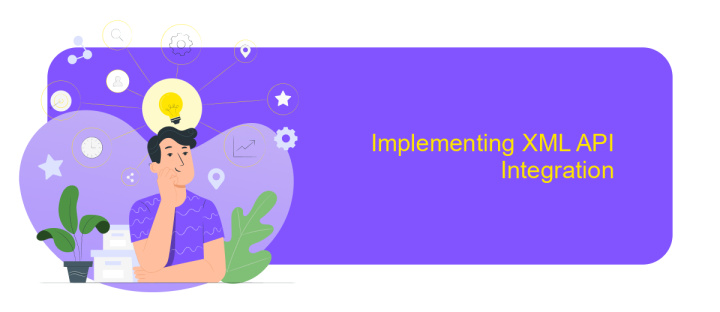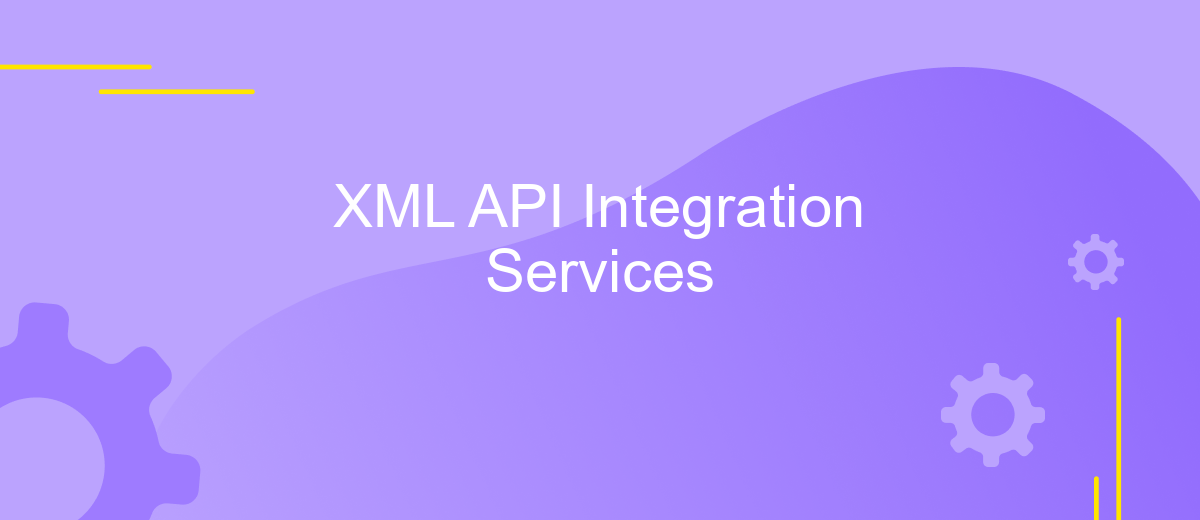XML API Integration Services
In today's interconnected digital landscape, XML API integration services play a pivotal role in enabling seamless communication between diverse software systems. By facilitating the exchange of structured data, these services empower businesses to enhance operational efficiency, improve data accuracy, and streamline processes. Whether you're looking to connect applications, automate workflows, or enhance data accessibility, XML API integration provides the robust framework necessary for achieving these objectives in a dynamic and scalable manner.
Understanding XML and APIs
XML, or eXtensible Markup Language, is a versatile format used to encode documents in a way that is both human-readable and machine-readable. It is widely used for data interchange between systems due to its flexible and structured nature. APIs, or Application Programming Interfaces, serve as intermediaries that allow different software applications to communicate with each other. When combined, XML and APIs enable seamless data exchange across diverse platforms, enhancing interoperability and integration capabilities.
- Data Structure: XML organizes data hierarchically, making it easy to parse and manipulate.
- Standardization: XML is a standardized format, ensuring consistency across different systems.
- Flexibility: XML's extensibility allows for custom tags, adapting to various needs.
- Compatibility: APIs using XML can interact with a wide range of software applications.
Understanding the synergy between XML and APIs is crucial for businesses aiming to streamline their operations through efficient data exchange. By leveraging XML-based APIs, organizations can enhance their system integration, enabling real-time data updates and improving overall productivity. This combination is essential for modern digital ecosystems, where seamless connectivity is a key driver of success.
Key Concepts in XML API Integration

XML API Integration involves the seamless exchange of data between different software systems using XML (eXtensible Markup Language) as a standard format. This process allows applications to communicate with each other, regardless of their underlying technology. The key concept here is the ability to define data structures in a way that both the sending and receiving systems can understand, ensuring accurate data transfer. XML's hierarchical structure is ideal for representing complex data, making it a popular choice for APIs that require detailed data exchange.
Another crucial aspect of XML API Integration is the use of integration services that simplify and automate the connection process. Tools like ApiX-Drive facilitate this by providing a user-friendly interface for configuring integrations without extensive coding knowledge. ApiX-Drive can connect various applications, streamline workflows, and reduce manual data entry, enhancing efficiency. By leveraging such services, businesses can quickly adapt to new requirements and integrate additional systems as needed, ensuring their operations remain agile and responsive to changing demands.
Choosing the Right Tools and Technologies

When embarking on XML API integration, selecting the right tools and technologies is crucial to ensure seamless connectivity and optimal performance. The choice depends on various factors such as project requirements, budget constraints, and existing infrastructure. Understanding these factors will guide you in making informed decisions that align with your business goals.
- Identify the XML API specifications and compatibility requirements to ensure the tools support necessary standards.
- Evaluate the scalability and flexibility of the tools to accommodate future growth and integration needs.
- Consider the ease of use and learning curve associated with the tools, ensuring your team can efficiently adopt them.
- Assess the level of support and community resources available for troubleshooting and development assistance.
- Analyze the cost implications, including licensing fees and potential hidden costs, to stay within budget.
By carefully considering these aspects, you can select tools and technologies that not only meet current demands but also provide a robust foundation for future integrations. This strategic approach will enhance your ability to leverage XML APIs effectively, driving innovation and efficiency within your organization.
Implementing XML API Integration

Implementing XML API integration involves several crucial steps to ensure seamless communication between systems. Initially, it's essential to understand the specific requirements of the integration. This includes identifying the data to be exchanged and the operations to be performed. A thorough analysis helps in designing an efficient integration strategy.
Once the requirements are clear, the next step is to select the appropriate tools and technologies. Choosing the right XML parser and API client library is critical for handling XML data effectively. Proper configuration of these tools is necessary to facilitate smooth data exchange and ensure compatibility with the existing systems.
- Define the data structure using XML Schema Definition (XSD).
- Develop the API client to send and receive XML requests and responses.
- Implement error handling mechanisms to manage exceptions and retries.
- Test the integration thoroughly to validate data exchange and performance.
After successful implementation, ongoing monitoring and maintenance are vital to ensure the integration continues to function correctly. Regular updates and optimizations may be needed to adapt to changes in either the API or the integrated systems. Proper documentation of the integration process also aids in future troubleshooting and enhancements.


Testing, Debugging, and Maintaining XML API Integrations
Testing XML API integrations is crucial to ensure seamless data exchange between systems. It involves validating the accuracy and reliability of data transmission through various test cases and scenarios. Automated testing tools can streamline this process, allowing for efficient detection of errors and inconsistencies. It's essential to simulate real-world conditions to identify potential bottlenecks and performance issues. Utilizing services like ApiX-Drive can facilitate this process by providing a user-friendly interface for setting up and managing integrations, ensuring that they function correctly before going live.
Debugging is a vital step in maintaining XML API integrations, as it helps identify and resolve issues that may arise during data exchange. This can involve analyzing error logs, monitoring API responses, and adjusting configurations as needed. Regular maintenance is equally important to keep integrations running smoothly and to adapt to any changes in API specifications or business requirements. By leveraging solutions like ApiX-Drive, organizations can automate routine maintenance tasks, reducing the risk of downtime and ensuring continuous, reliable integration performance.
FAQ
What is XML API Integration?
How does XML API Integration work?
What are the benefits of using XML for API Integration?
How can I automate XML API Integration processes?
What should I consider when choosing a service for XML API Integration?
Apix-Drive is a universal tool that will quickly streamline any workflow, freeing you from routine and possible financial losses. Try ApiX-Drive in action and see how useful it is for you personally. In the meantime, when you are setting up connections between systems, think about where you are investing your free time, because now you will have much more of it.

